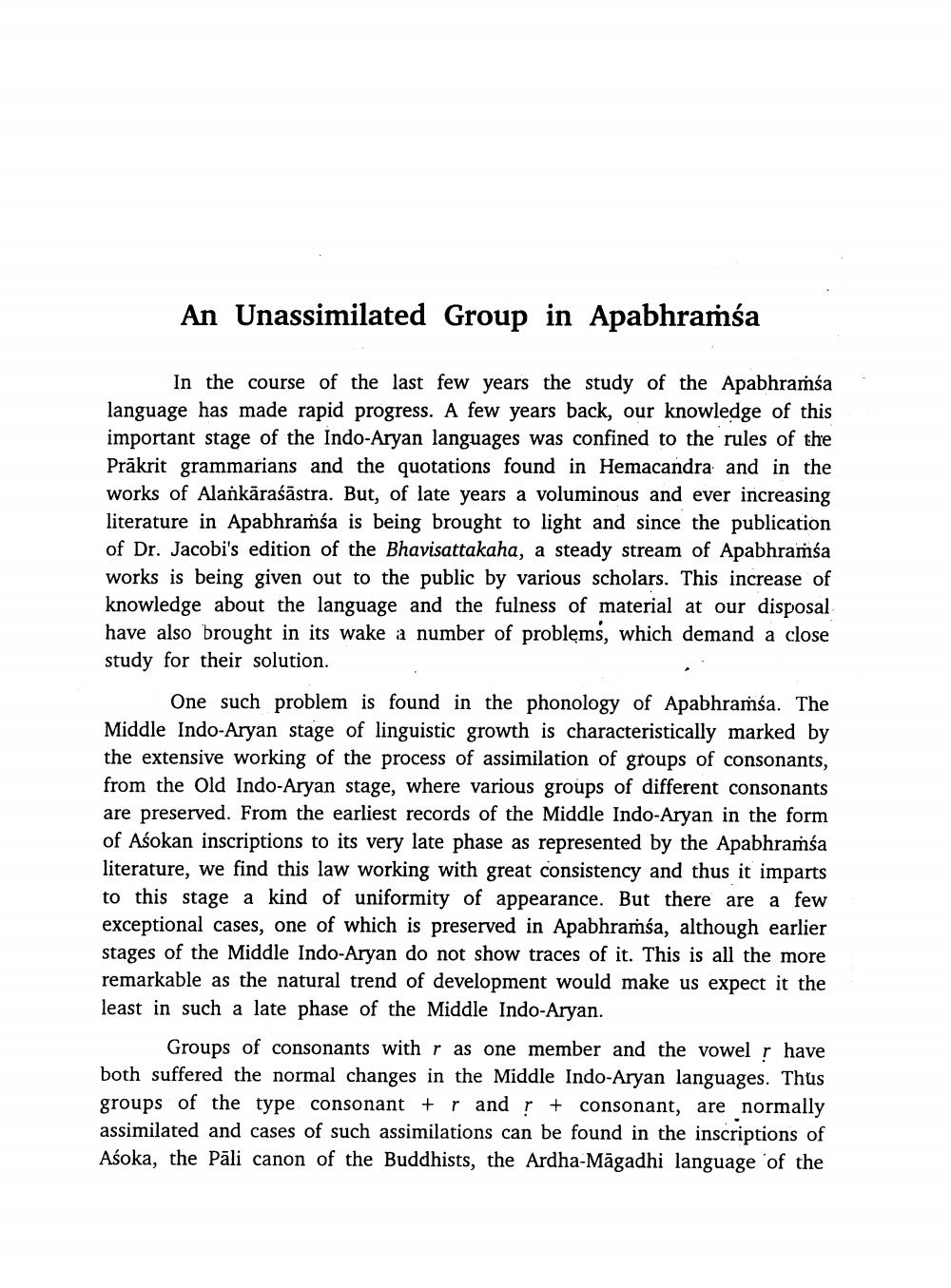________________
An Unassimilated Group in Apabhramsa
In the course of the last few years the study of the Apabhramsa language has made rapid progress. A few years back, our knowledge of this important stage of the Indo-Aryan languages was confined to the rules of the Prākrit grammarians and the quotations found in Hemacandra and in the works of Alankāraśāstra. But, of late years a voluminous and ever increasing literature in Apabhramba is being brought to light and since the publication of Dr. Jacobi's edition of the Bhavisattakaha, a steady stream of Apabhramsa works is being given out to the public by various scholars. This increase of knowledge about the language and the fulness of material at our disposal have also brought in its wake a number of problems, which demand a close study for their solution.
One such problem is found in the phonology of Apabhramba. The Middle Indo-Aryan stage of linguistic growth is characteristically marked by the extensive working of the process of assimilation of groups of consonants, from the Old Indo-Aryan stage, where various groups of different consonants are preserved. From the earliest records of the Middle Indo-Aryan in the form of Asokan inscriptions to its very late phase as represented by the Apabhramsa literature, we find this law working with great consistency and thus it imparts to this stage a kind of uniformity of appearance. But there are a few exceptional cases, one of which is preserved in Apabhramsa, although earlier stages of the Middle Indo-Aryan do not show traces of it. This is all the more remarkable as the natural trend of development would make us expect it the least in such a late phase of the Middle Indo-Aryan.
Groups of consonants with r as one member and the vowel r have both suffered the normal changes in the Middle Indo-Aryan languages. Thus groups of the type consonant + r and r + consonant, are normally assimilated and cases of such assimilations can be found in the inscriptions of Asoka, the Pāli canon of the Buddhists, the Ardha-Māgadhi language of the




